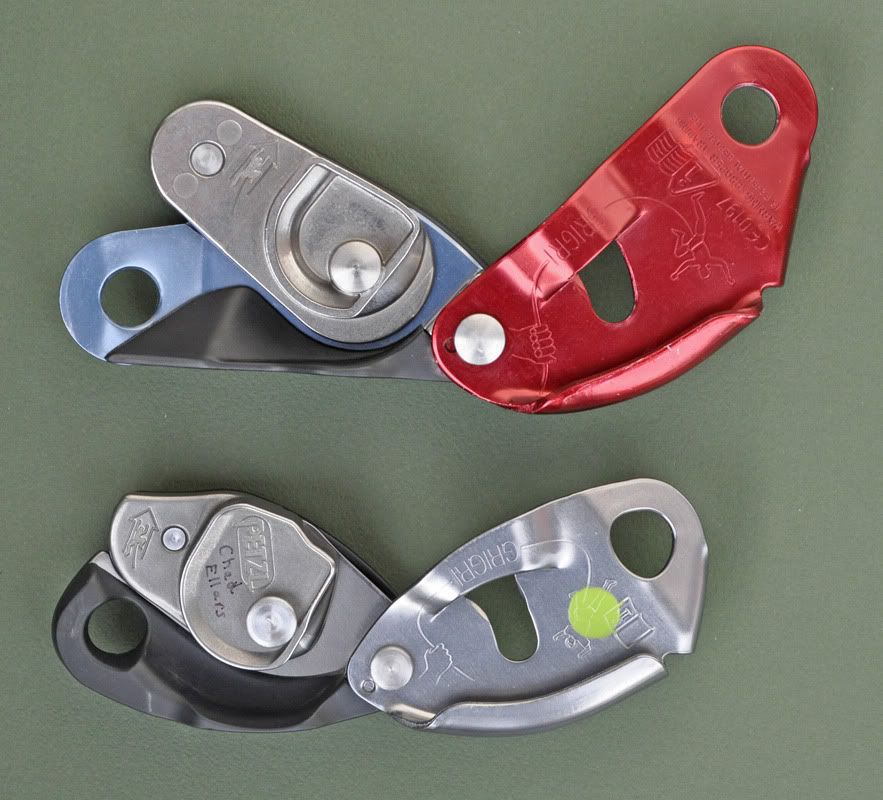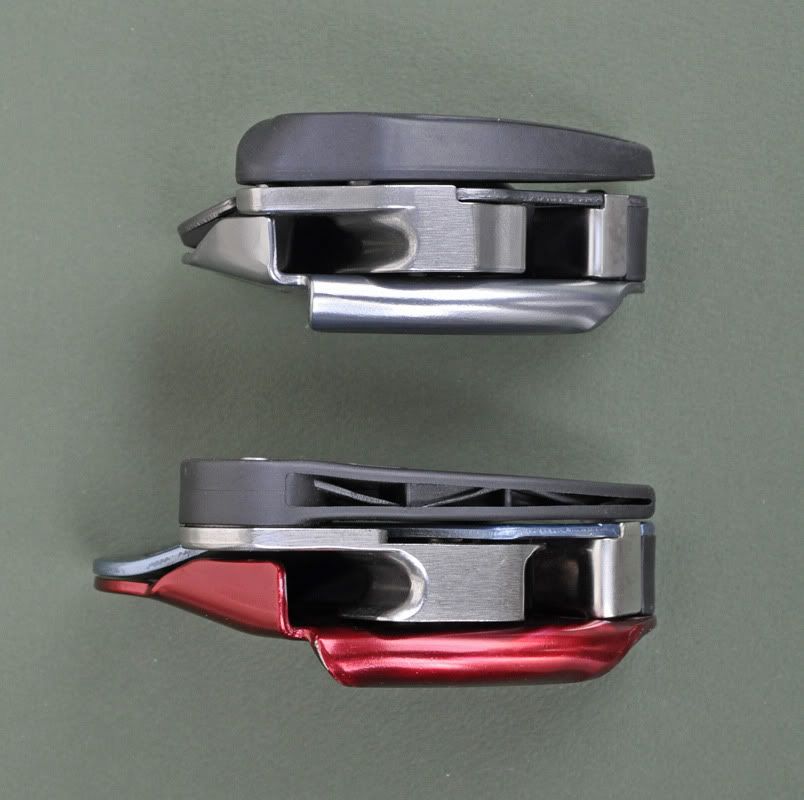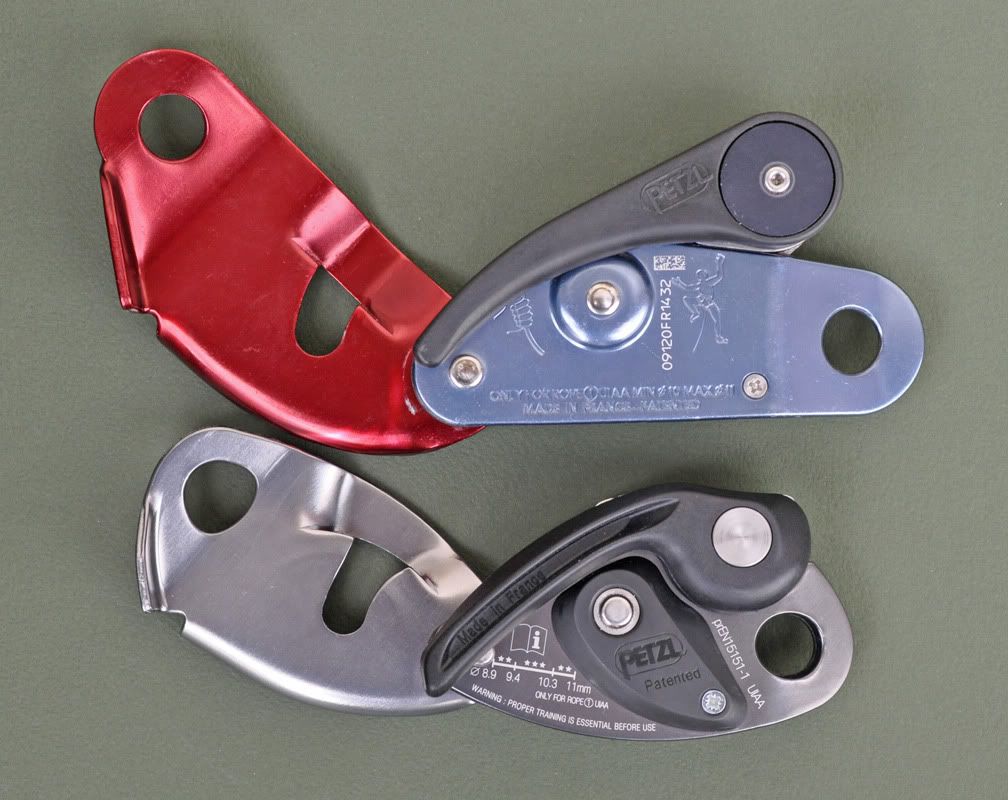-
Posts
266 -
Joined
-
Last visited
Content Type
Profiles
Forums
Events
Posts posted by Lodestone
-
-
Your photo doesn't seem to support this claim. There seems to be an equal number of tracer twists running over the cam. The body has obviously been retooled but other than making the groove deeper there seems to be very little altered as far as the geometry of the braking mechanism.
It may not be obvious from the pictures but the cam on the new model is slightly bigger and the body of the device is smaller than its predecessor. The rope, any rope, has to bend at a tighter radius when entering and exiting the device. Try it out, let me know what you think.
I thought that the 2 was going to be an improved version of its predecessor. What I've found is that it's better in some regards and good in certain applications but hardly a jack of all trades. A lot of people are going to love it. I just got rid of mine this afternoon.
Chad
-
The forecast is looking good. Anybody want to get to do some cragging tomorrow? I'll be rope-soloing at Rocky Butte as a back-up plan but I'd much rather get out to Broughton Bluff, Ozone, or....?
Let me know.
Chad
-
Thanks for the report and offering it to me as a loaner Chad. I like that it's lighter than my Cinch!
Strangely, the official weight given by Petzl for the Grigri 2 appears to be heavier than the actual weight of the unit.
Using my digital scale, the first generation Grigri weighs 224 grams (specified at 225 grams). The Grigri 2 weighs 169 grams (specified at 185 grams). I suspect that the scale is fairly accurate given that the official weight stated for the Trango Cinch is 182 grams and our hands-on "testing" clearly showed the Cinch to be slightly heavier than the Grigri2.
Chad
-
Here's a few comparison shots. The rope in the second picture is 9.9mm.




Chad
-
agreed. I did a couple and one of the two I did is the best route at the far side area. (IMO) Gear route!
Which one?
Chad
-
I really want to redpoint Chariots Of Fire. Finish a number of sweet routes. Lastly, be healthy and injury free.
Chad
-
I've gotten to use my Grigri2 a bit and have formed a few opinions about it. All the reviews of it so far have been glowing and I feel like some reality needs to be injected into the discussion.
When comparing the Grigri 2 to its predecessor the pros are:
-Smoother lowering. I've tried it with several rope diameters and this has universally been true. I've yet to try the second generation on a wet rope; that will be the litmus test. I suspect it will be better than it's predecessor.
-Lighter/more compact.
The cons are:
-The 2 does not handle fatter ropes very well. I've used it with 11mm static line and fat old gym ropes. It is hard to pull these ropes through the device and quite difficult feeding rope. -With more "normal" sized ropes (~10mm), it works just fine although the 1st generation still feeds these ropes easier. I've never been in to lead belaying with a Grigri but those that do might want to borrow a 2nd generation before spending the money.
-The handle is shorter. Minor gripe.
-The cam is shorted and harder to manipulate for feeding rope quickly. This compounds the rope feeding problem.
-Although I gave up on TR-soloing with a Grigri a while ago, I really wouldn't consider it with the new model. It's so much more compact that the path that the rope takes through the device is more abrupt.
I'll probably end up using the two models at different times. The old model for use with fat ropes and static lines. The new model for cragging.
I'd like to hear other people's opinions on the new model.
Chad
-
If this is Spectra/Dyneema you're talking about then no, you shouldn't knot them to make a sling, lanyards, etc. It's not about the knot cutting itself but that the material is so slick that a knot will pull through under a heavy load. What have you seen that has been knotted out of Dyneema?
Chad
-
Kevin
I'm pretty sure Climb Max has it in stock. Might want to call them first before you head out. 503 979-1991
Chad
-
MOSTLY SUNNY, SHIT! Don't OD on vitamin D

I'll be up there Sunday. Taking out the kayaks tomorrow...
Have fun. Are you going alone?
I still haven't found a partner for Saturday. Anyone? I'd rather not resort to plan B.
Chad
-
Someone here must have an old ice axe in the basement. I'm not looking for a valuable antique.
Something like this would be ideal:

Chad
-
I'd like to get out to Broughton Bluff tomorrow (Sat). The weather forecast is looking good. Let me know if you're interested.
Chad
-
I'm looking for a crappy, POS, beat-up ice axle. It has to have an adze. A straight shaft would be ideal but something with a slight curve would work too. Local pick-up in Portland would be nice.
Chad
-
either way, the V-twin seems to be the peace of mind i'm looking for. i'll try it for rapping, and keep the ATC for belaying.
US Outdoor Store in downtown has them: http://www.usoutdoorstore.com/outlet/dmm-v-twin-belay-device.html?cvsfa=2293&cvsfe=2&cvsfhu=3134303533
-
I don't usually rap at 30mph, do you?
20 feet/second is probably the fastest I rappel and that works out to less than 14 miles/hour.
Chad
-
are my heat concerns with the ATC valid?
I've gotten several belay devices too hot to touch, including an ATC. I've yet to get burn lines on my rope. When I'm done with the rappel I get the rope out of the device (if it's hot) so as to not cook the rope. Hard to say if your concerns are valid without being there.
would another dual-purpose device work better than the ATC? what about the reverso?I have only been using one for a couple months now but the DMM V-twin is very resistant to heating up. It could be a double edged sword though, if I ever do heat the thing up, it's going to take a while to cool off (stainless steel). As a bonus, you probably won't be able to wear one out for a long long time. Oh yea, if you do get a V-twin, you might want to smooth the edges a little bit with some fine sandpaper. A friend put some fuzz stripes down a new rope because of the rough casting surface on the V-twin.
what other non-tail-coiling devices should i look at for dedicated rappel?Ditto what hanman said, a small brake rack.
Chad
-
what's the name of the line that tops out above the ranger tab?
Unless there's more than one of those spray-painted RANGER things, it's near the top of Phylynx. Incredible route. I put some info on accessing the Wizard Wall climbs here : http://www.mountainproject.com/v/oregon/rocky_butte/wizard_wall/106950993
^Is that the area you're talking about Ben? Like Joseph said, the tops is going to be slick right now (although most of Wizard Wall is probably dry right now). While you're out there, try Mind Games if you haven't already.
Chad
-
I guess I haven't been out to Broughton this time of year. What areas/lines dry out quickly out there? I would love to throw my fist up in the Sickle again.
B.B. routes that are usually dry:
Hanging Gardens
Edges & Ledges (gets wet in spots but not in key areas)
The Sickle (gets water on the outside of the 'flake' but doesn't affect climbing)
P1 Loose Block Overhang (the mantel below the anchor gets wet but it's not a deal breaker)
Red Wall
Anastasia (usually dry but it wasn't 2 weekends ago)
Classic Crack (it'll be dry enough)
P1 Red Eye (I've climbed this in the rain but it weeps after several days of precipitation)
Thai Stick (doesn't get rained on but it can get seeped on)
P1 Sheer Stress (it'll be dry enough)
Sheer Energy (can get seeped on but the crux stays dry)
Spring Rock
Toe Cleavage (gets seeped on but the crux stays dry)
Free Bird (the top is usually wet but the roofs stay dry)
Short Fuse (it'll be dry enough)
Bat Wall
There's a lot of dry rock here but the popular moderates (P1 Superstition, Lost Boys, Well Hung) are often wet in bad areas.
Chad
-
That's about what I figured, everything around here is going to be real wet till June-ish.
Broughton Bluff has quite a few dry lines right now. It's a good place to climb during a light rain. Same thing with the Farside.
Chad
-
Hi Ben
I'd be up for some climbing with you at Rocky Butte. Especially after Daylight Savings when climbing after work is viable. I don't tend to climb there too much in the winter as there are warmer and dryer places near town.
Have you been out there recently? What's dry?
Chad
-
Mark
It seems as though the fid might poke/impale the climber given the right set of circumstances.
Dane
I'd like to see a picture of this knot.
Chad
-
Sweet TR. I'd been wondering about Free Lunch.
Chad
-
Laser - precise, modern, etc.
or
Hornet - green shoes....green hornet
Chad
-
any guesses on rock type?
limestone



Grigri 2
in The Gear Critic
Posted
I haven't put much mileage on mine but it seems like a great rope so far. They are on sale at Everest Gear for $149. Free shipping too. http://www.everestgear.com/glbi9drytpt1.html
Chad